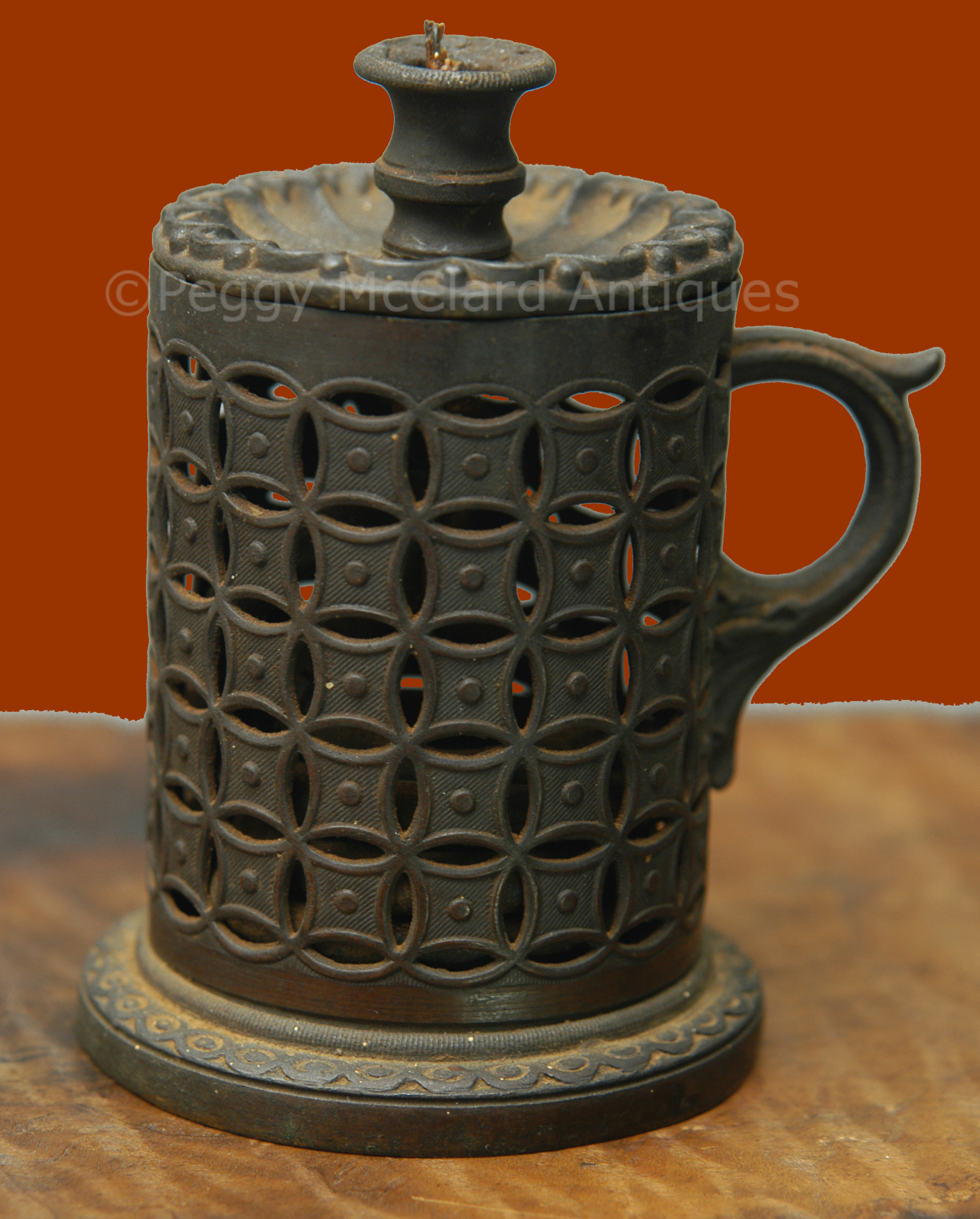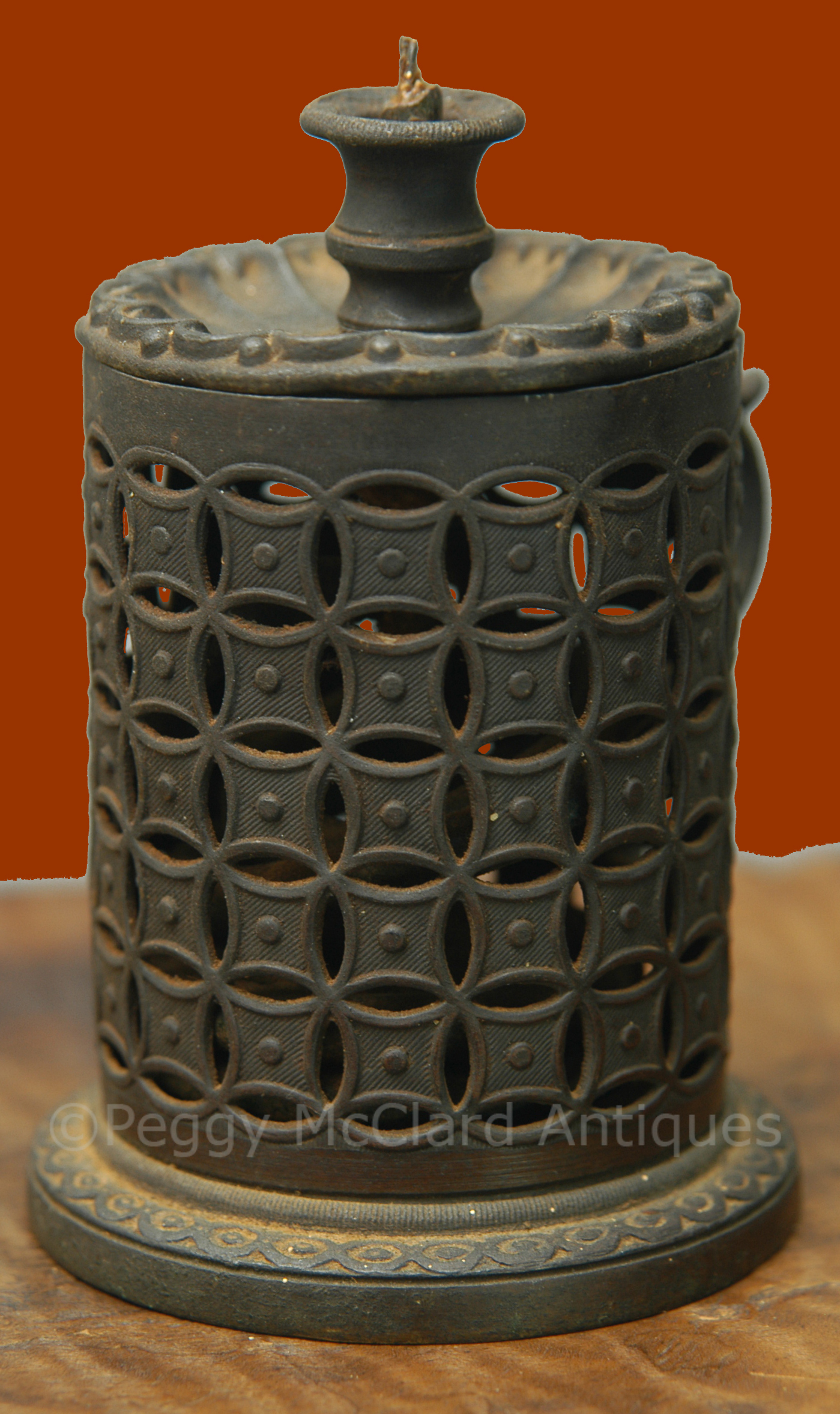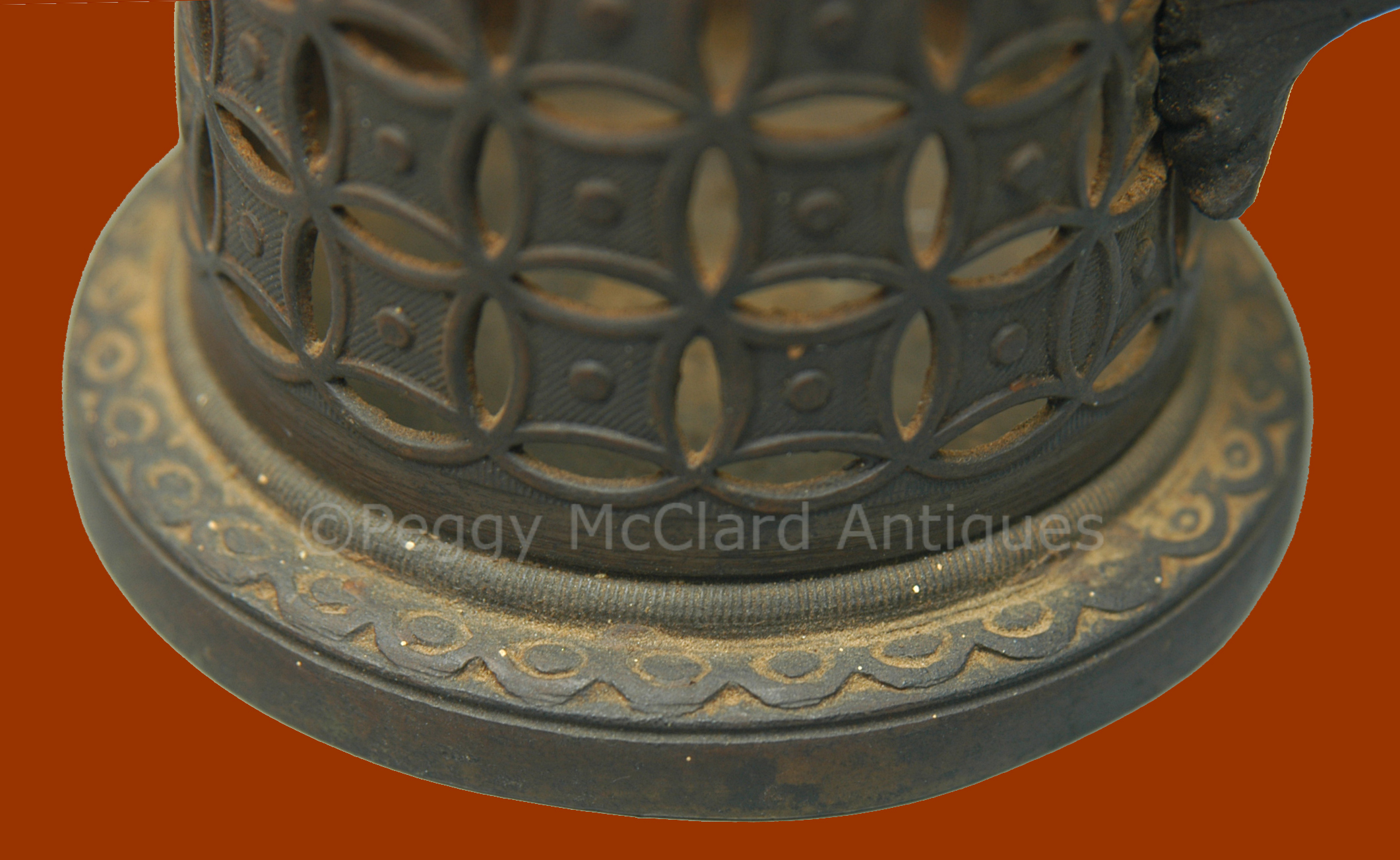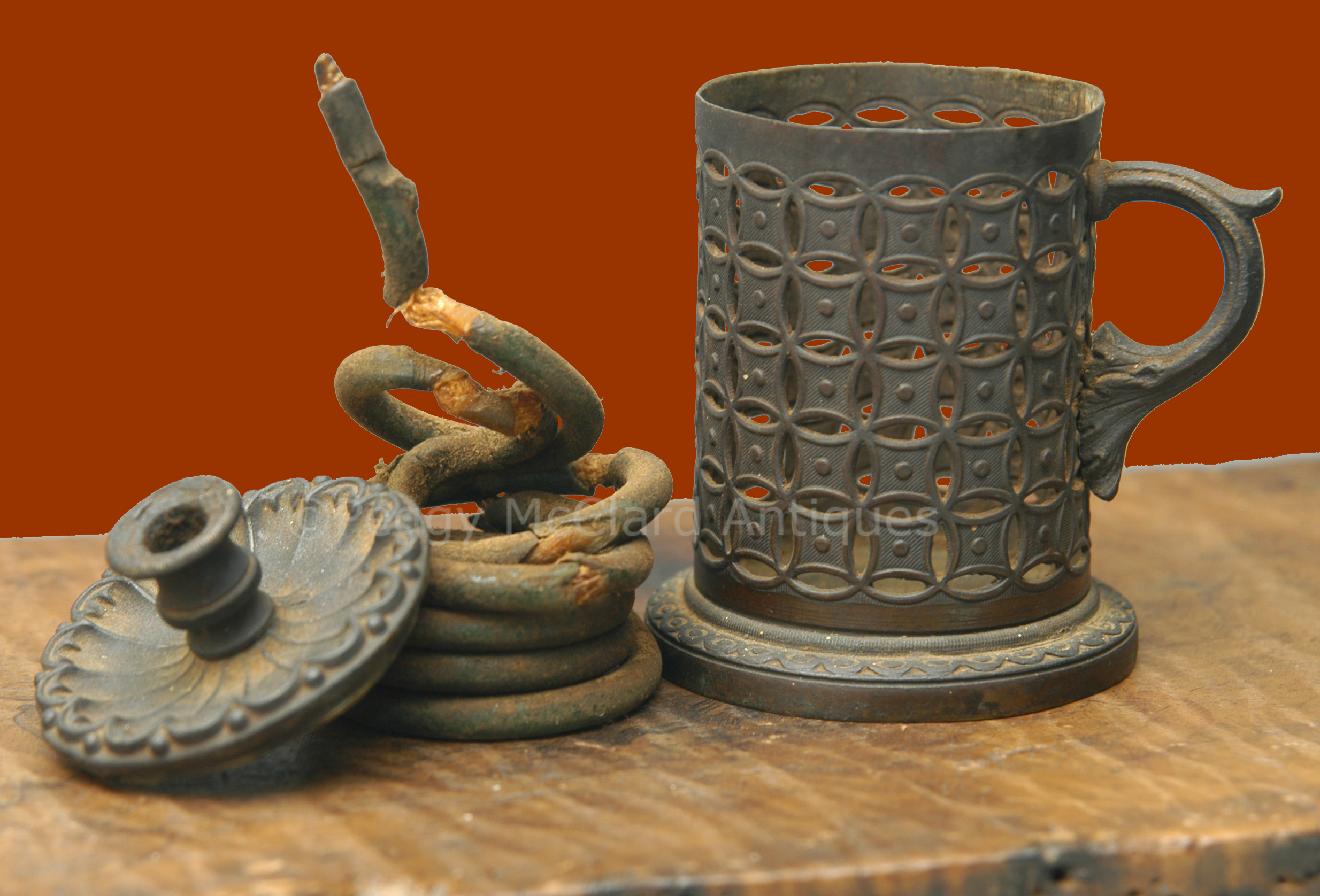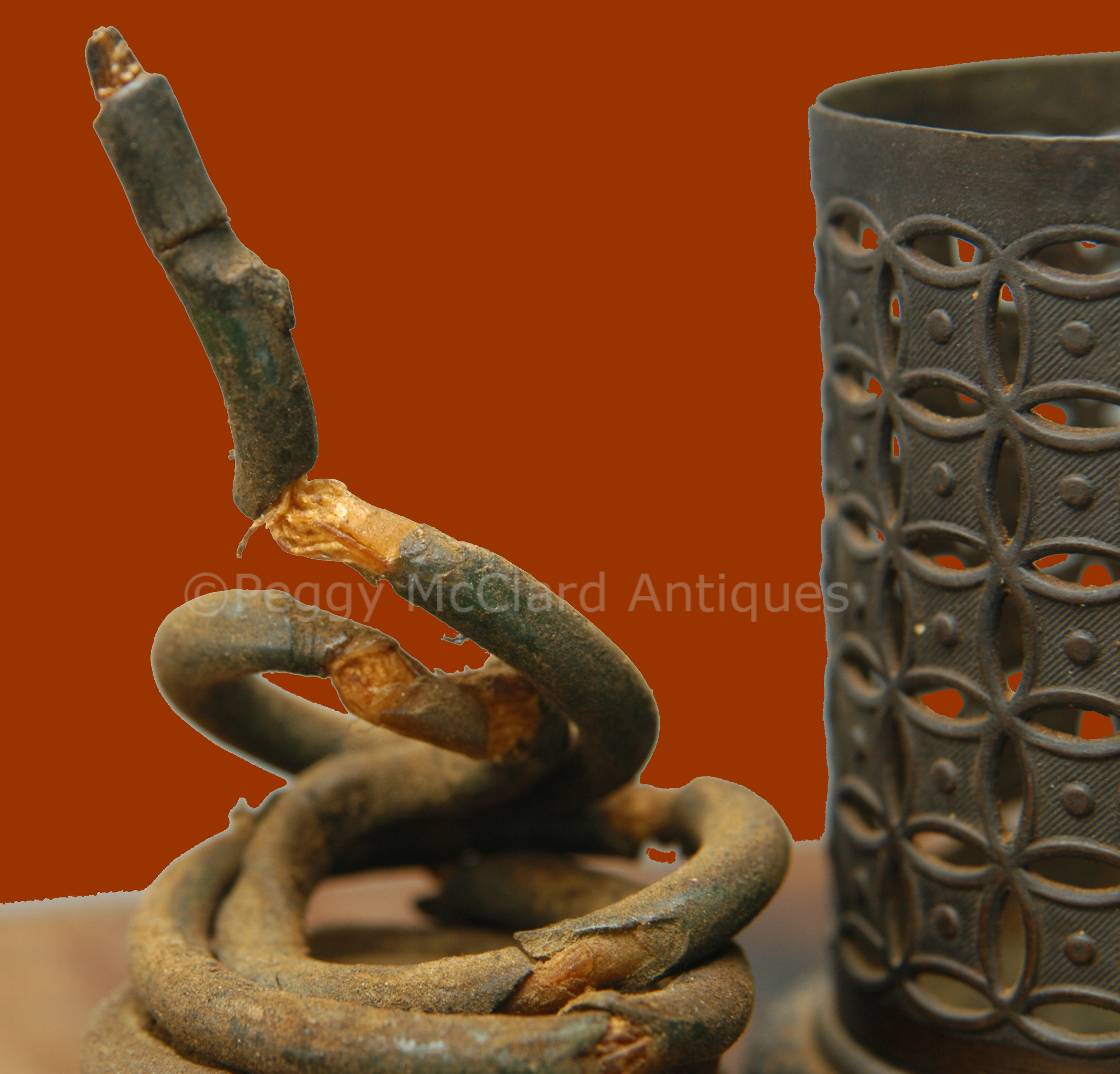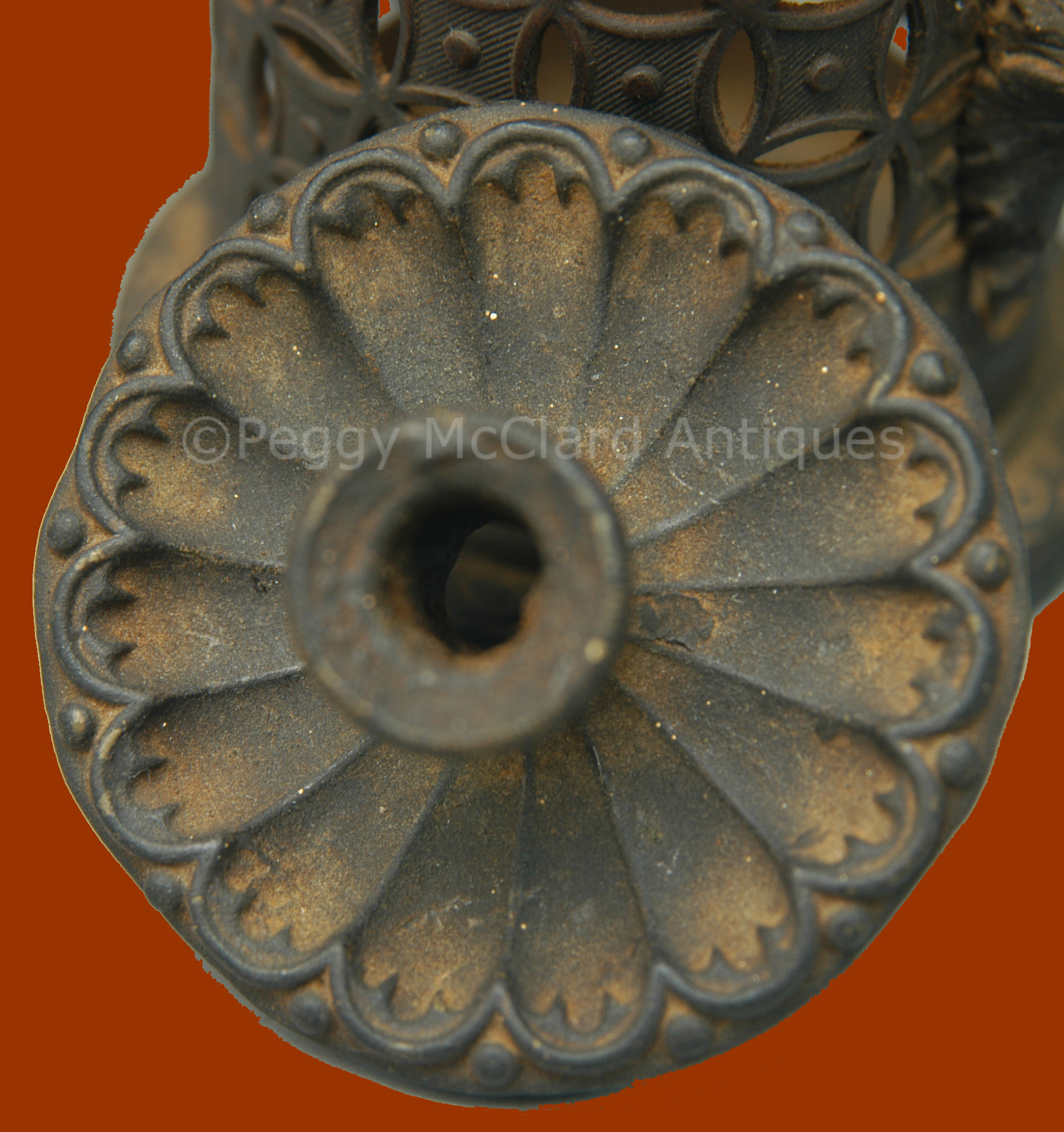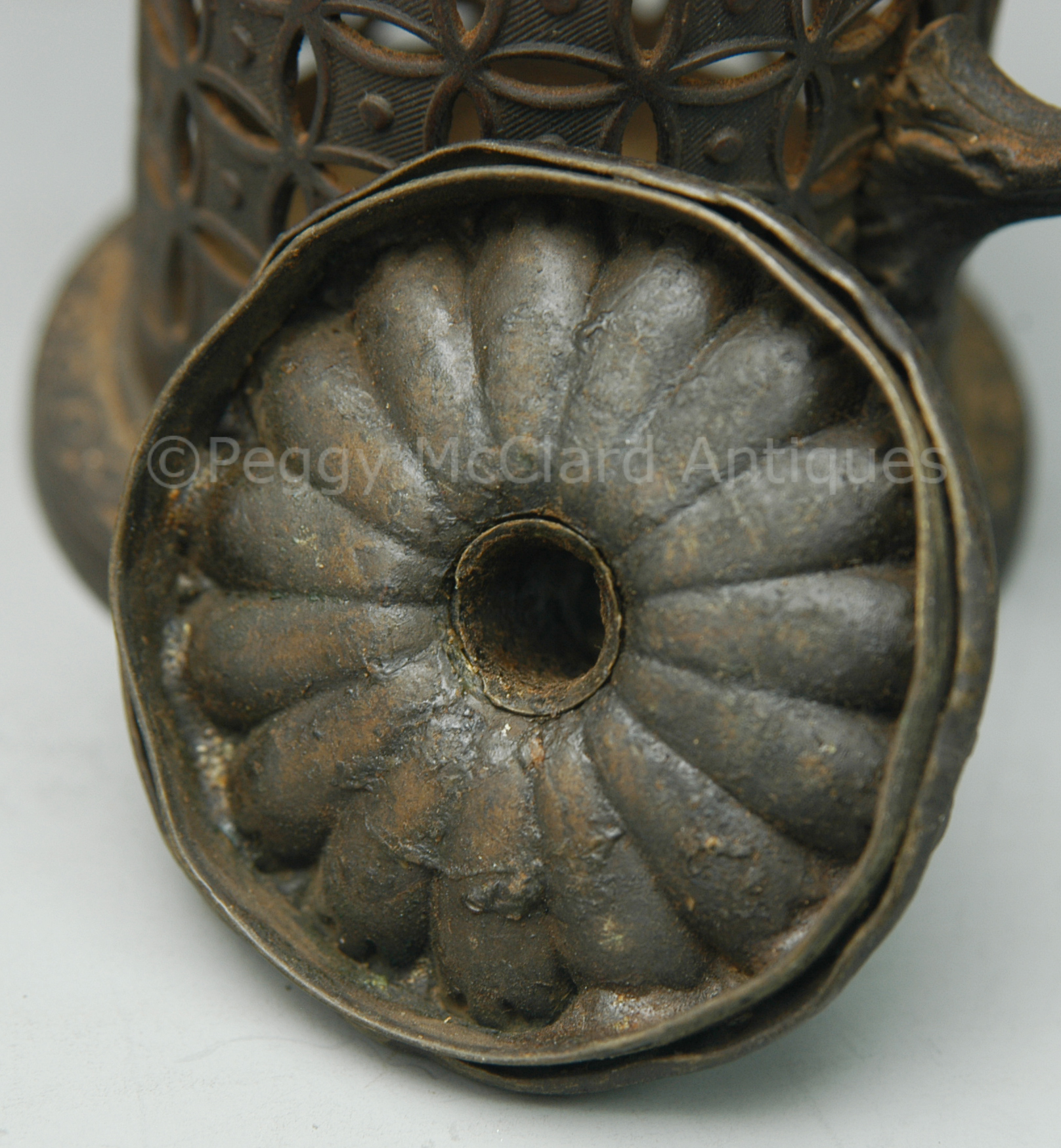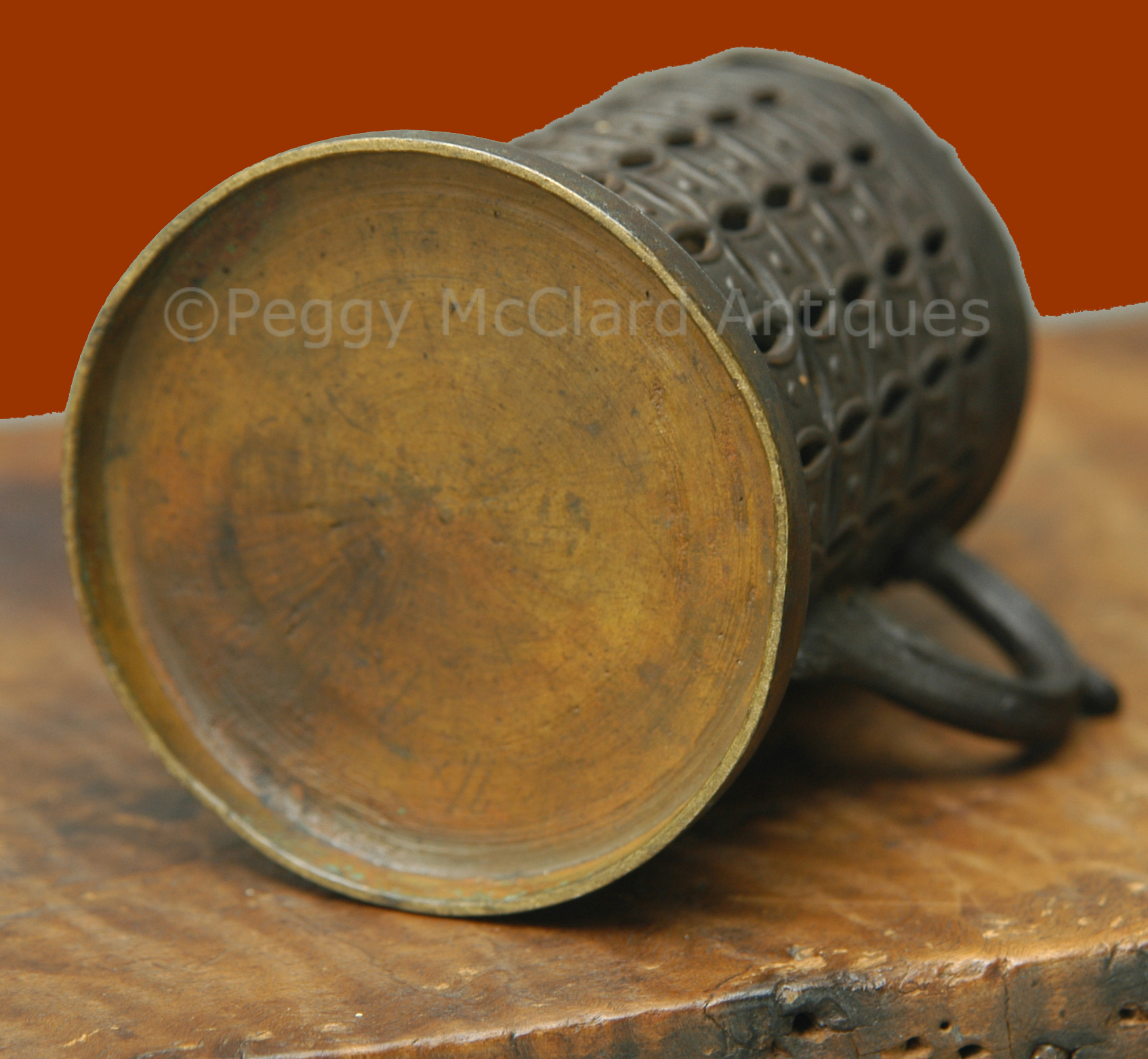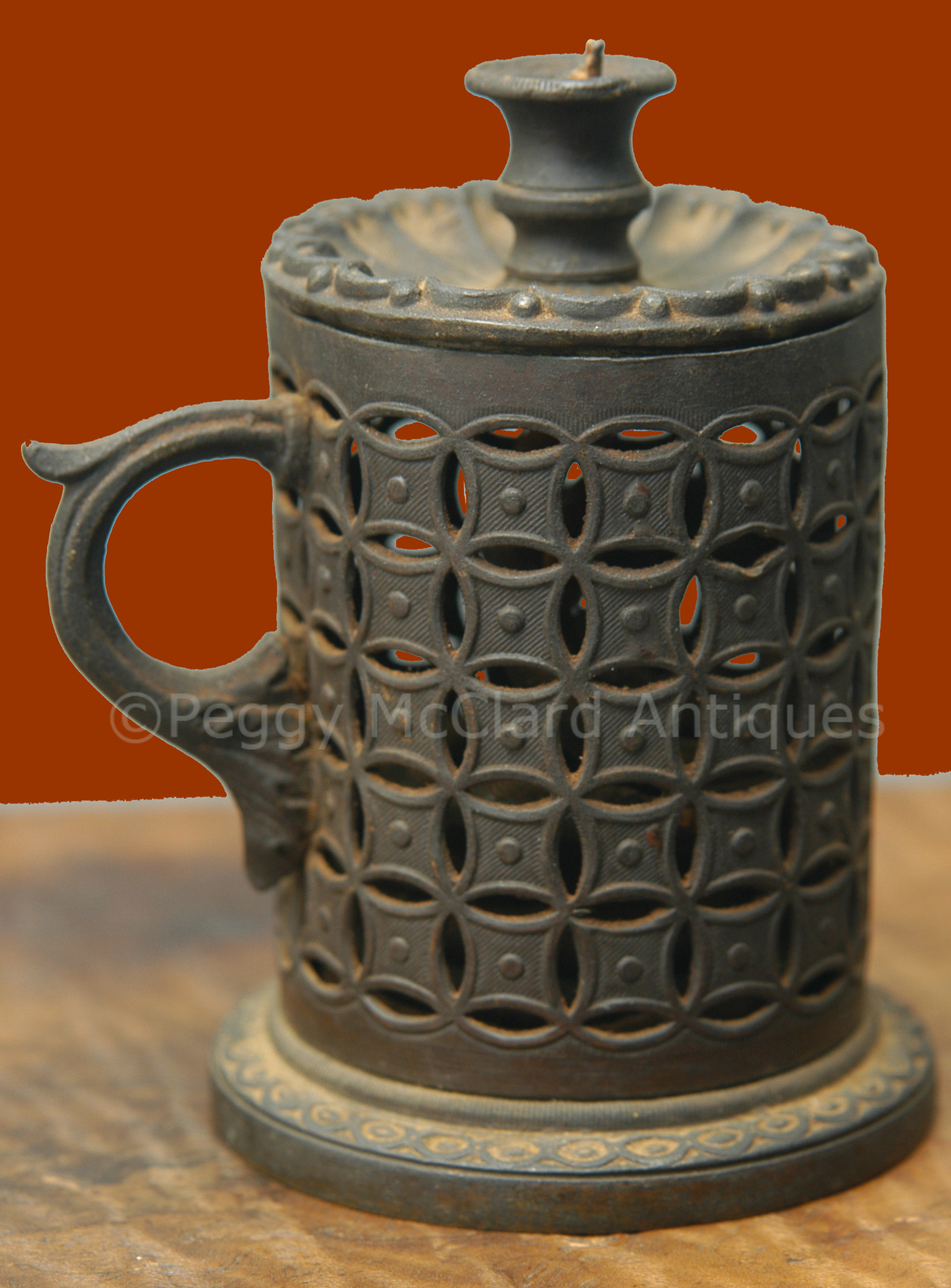
Here in America, we normally use the name “wax jack” both wax jacks and bougie boxes. Technically, this is a bougie box and it is a fabulous one in that it fits so beautifully into a Country or Americana setting whereas most bougie boxes were of very high style and made of silver.
Although we tend to put wax jacks into the early lighting category, they were really not originally intended as lighting. In the 18th and beginning of the 19th centuries, letters were sealed with wax, which had to be warmed to be used. Using a candle flame to heat the wax was problematic because the flame was often hot enough to scorch the wax, leaving a darkened blob of wax on the letter or even compromising the cohesiveness of the wax so that the seal would not hold. In the mid-17th century the wax jack was developed for the purpose of heating sealing wax. The wax jack was developed as a roller or spindle, mounted to some type of frame. Early wax jacks (also called taper jacks) were generally a shallow container with a vertical or horizontal spindle around which was wrapped a length of taper. The taper was often a length of fiber wick coated with wax. The wick was usually held by some sort of clip or scissor at the top of the support. The clip held the wick tightly so that it prevented the wick from burning below the clip. These wicks tended to burn a small, but steady clean flame ideal for melting the end of the sealing wax stick. In the 18th century, wax jacks were made in many styles and of various metals. The bougie box was developed from the more simple wax jack during the first decades of the 18th century. Bougie means candle in French. The bougie box seems to have developed on the Continent then migrated to England in the middle of the 18th century. Unlike the wax jack, the bougie box was developed for use as a light. A bougie box is a closed container, usually cylindrical, into which a long coiled taper is placed. The taper is fed up through a small hole in the lid of the box for burning. The burning time of the taper could be controlled by how much taper was pulled through the top hole. The English, however, soon began using the bougie box for the same purpose as the wax jack.
The writer would write all letters to be sealed during a single writing session so that they could be sanded and dried before folding. When all were ready for sealing, the wick of the taper would be lit and the thick stick of sealing wax would be held near the flame until enough had melted to produce a seal. The blob of melted sealing was would be dropped onto the paper and the writer’s seal would be warmed and pressed into the hot wax. Warming the seal resulted in a more precise image of the sealing wax. In the case of a high volume of documents needing to be sealed through the day (such as a business office), a large wax jack would remain lite all day. More frugal businesses and homes would likely only light their wax jack at the end of the day.
Some people believe that the wax of the wax-jack’s taper was used to seal letter. This is probably inaccurate because pure beeswax is inferior for sealing letters for the same reason that it was good for use in a wax jack—the beeswax remains flexible even after cooling. Furthermore, the wax of the wax-jack’s taper would be completely consumed while it burned, leaving no wax to drip for use as a seal.
Wax jacks and bougie boxes were sometimes used as an inferior source of lighting. They did not provide as much light as a candle, but would throw enough light for a room occupant to see their surroundings and, if placed in front of a looking glass, they would throw a bit more. Many travelers packed a bougie box in their luggage for both heating sealing wax and as a source of light.1
So whether you want to call this a wax-jack or a bougie-box, it is a wonderful piece and will fit beautifully within a collection of early Americana. It appears to be made of brass—the only part on which I can see the unoxidized metal is the bottom, which is definitely brass. Truly, the rest of the piece may be made of bronze, but it is a very light-weight piece even though there is quite a bit of metal—which leads me to believe that it is all brass. It has a wonderful pierced design with raised dots throughout the cylindrical body. The overall design is much like a trellis with interlocking circles. The bottom rim has an ornate case design and is stepped. The removable top is covered with a petaled flower that is deeply molded so that, from the inside of the lid, it looks like the bottom of a pumpkin. Found with the early artifact is an old grungy coil of wax covered fiber taper that has been coiled so long that it sits in its coiled position even when you pull it out. The bougie-box has oxidized greatly over the years so that it first gives the impression of cast iron. There is rust sprinkled throughout. The rim has some bends along the inside but it fits well. I think it is a real gem. 4” tall with the top (about 3 1/8” without the top) x 2 ¾” diameter base. The widest point (to the end of the handle) is about 3”. Circa last half of the 18th century. Likely Continental or English.
#5658 Sold
1Kane, Kathryn, “Of Wax-Jacks and Bougie-Boxes”, The Regency Redingote, posted January 18, 2013

